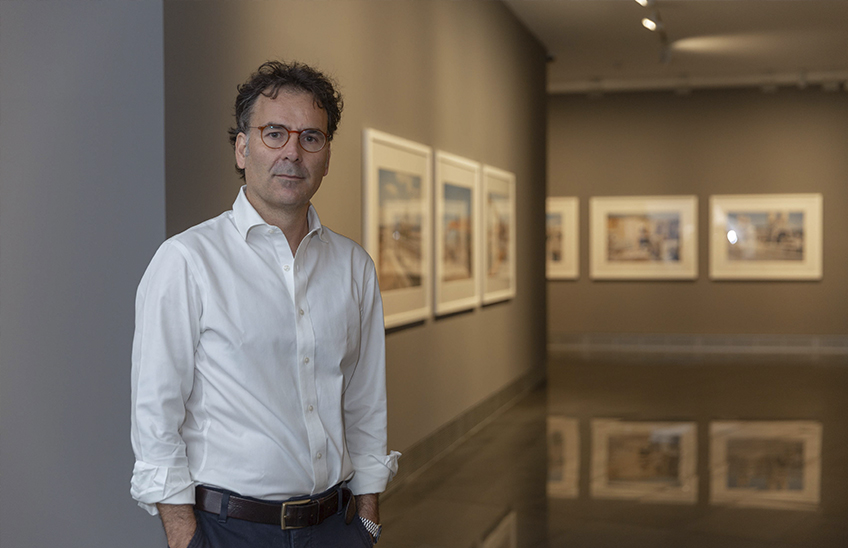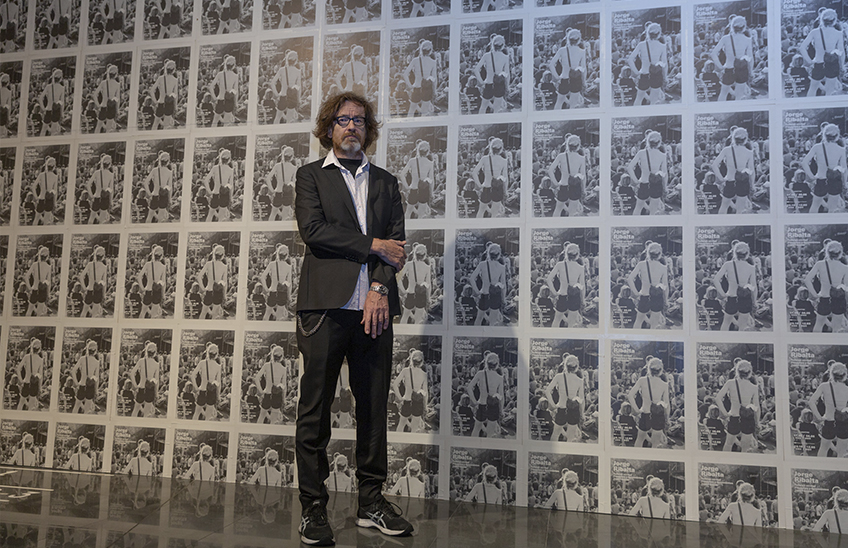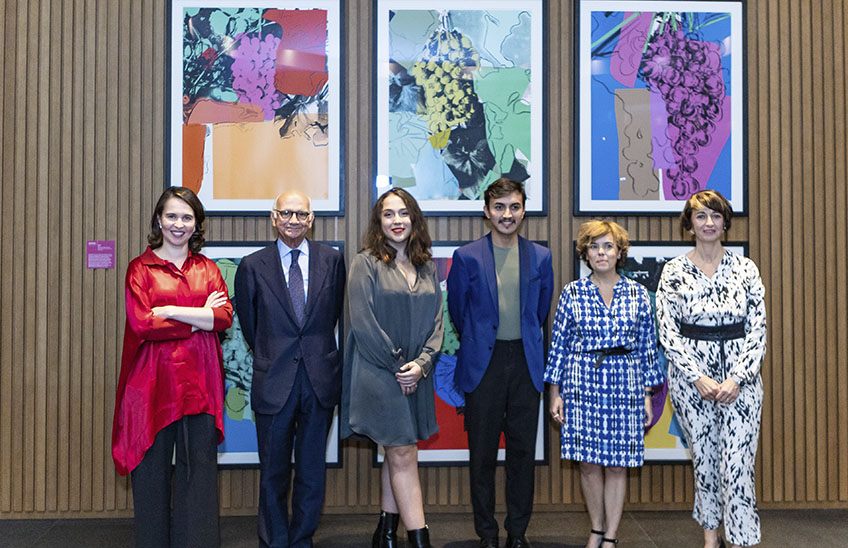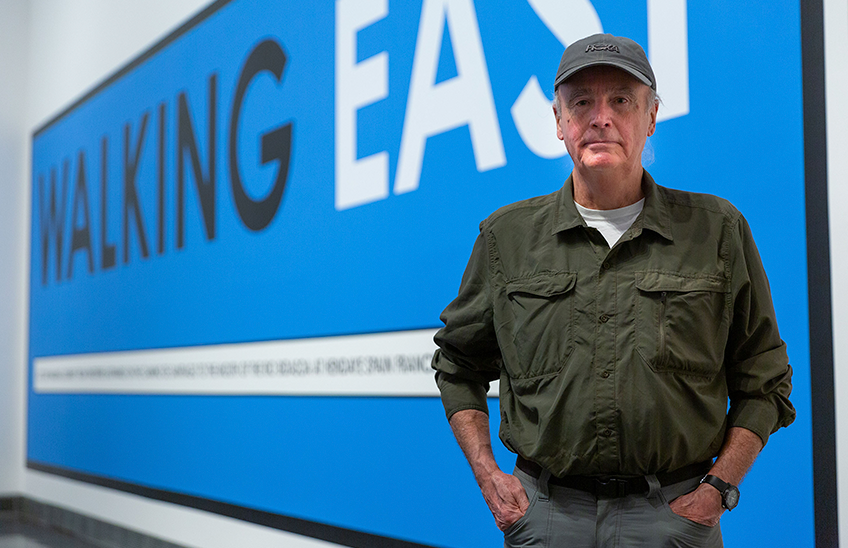The geometric method of Pablo Palazuelo arrives at MUN with a great exhibition that approaches the artist's creative process.
The sample, curated by Gonzalo Sotelo-Calvillo, curator of the Palazuelo Foundation, brings together more than 130 paintings, sculptures, drawings and sketches, as well as books and other documents.
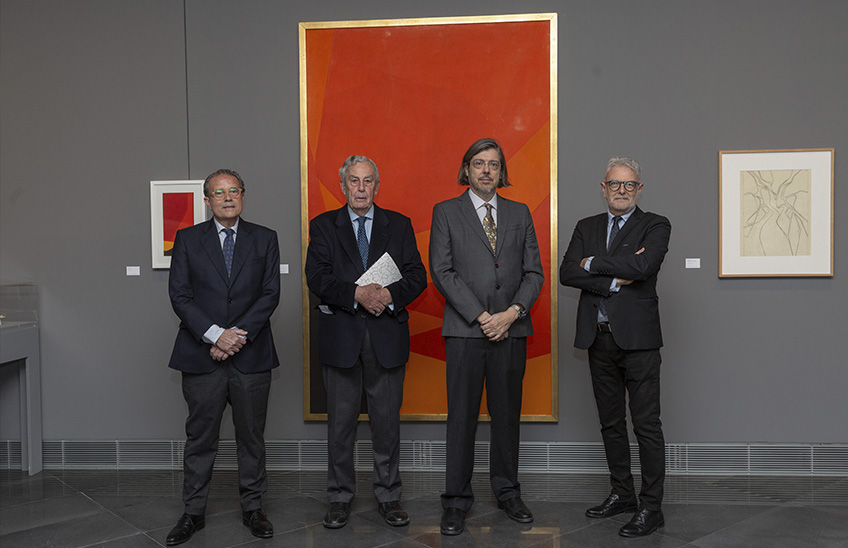
FotoLeireEscalada/Rafael Levenfeld, director artistic of the MUN; José Rodríguez-Spiteri, president of the Palazuelo Foundation; Gonzalo Sotelo-Calvillo, curator and curator of the Palazuelo Foundation; and Valentín Vallhonrat, also director artistic of the MUN.
29 | 03 | 2023
Like an open door to the artist's studio, the exhibition Geometric method. Pablo Palazuelowhich opens this Wednesday at the Museo Universidad de Navarra, allows us to approach the figure of the artist, one of the great referents of the Geometric Abstraction Geometric Abstraction in Spain, and his creative process. The sample, on display in the halls of the Floor -1 until September 3, brings together more than 130 paintings, sculptures, drawings and sketches, as well as books and other documents belonging to the University of Navarra Museum Collection and the Palazuelo Foundation, which collaborates in the proposal. In addition, one of the sculptural pieces belongs to the Freijo Gallery in Madrid. Sixty percent of the pieces had not been shown to date.
presentation José Rodríguez-Spiteri, president of the Palazuelo Foundation; Gonzalo Sotelo-Calvillo, curator and curator of the Palazuelo Foundation; and Valentín Vallhonrat, director artistic of the Museum of the University of Navarra together with Rafael Levenfeld.
"The visitor will find an arrangement of the artist's work that integrates the pieces of the University of Navarra Museum Collection, from the bequest of María Josefa Huarte, in a coherent narrative, ordered not chronologically, but through the series of different works, depending on how the geometric process is developed," explains the curator. In this sense, it seeks, "from a didactic point of view, to explain or bring the visitor not only the finished work, which is what is usually found in a exhibition, but also add what are the previous steps, ie, the sketches he made on onion paper, sketches and color tests that will accompany the drawing or the finished oil painting or the final sculpture".
Throughout his degree program, the artist was very zealous about showing what his way of working was and this exhibition sheds light on this process and exhibits pieces that illustrate it. "At the beginning, when Palazuelo drew, there was no geometric relationship between his strokes. What he did throughout his life was to frantically search for a geometry that would serve as a structure, like a mesh or a grid on which to place the designs to set the rules of the game, as if it were a chessboard," explains the curator.
On the use of color, he notes that "Palazuelo looked at the symbolic part of colors from the point of view of alchemy. The book Opus Magnum proposes four stages of knowledge, black, white, greenish yellow and, finally, ruby red. These colors are seen in almost all the works".
The development of Palazuelo's artistic degree program and his life experiences go especially hand in hand and two trips cannot be ignored core topic: one formative, which he made in Oxford to study architecture, and his time in Paris: "From the period in Oxford come, for example, the accuracy, the rigor in the drawing and the use of papers that are transparent. There are many works that are like a mirror: he would draw with grease pencil on one side, turn it over, pass an awl over it and it would remain impregnated in the other drawing. Thus, the original and the sketch are the same but seen in a mirror. In Paris he met Chillida, Calder, Miró, Giacometti, Braque... It was the European cultural capital at that time. And it is there where he begins to try to find the theoretical foundations, going through the antiquarian bookstores. On the one hand, he is marked by geometry and, on the other, he tries to reconcile a Western, rationalist, scientific vision with an Eastern, mystical vision, which, however, were like two sides of the same coin, which could get along well. Without these two journeys his work cannot be understood".
Furthermore, in Palazuelo's case, geometric abstraction is propitiated by his attempt to approach the force of nature, which is broken down into perfect geometric forms. "He considered that art is not to reproduce the visible, but to make visible and try to talk about the forces or energies of nature that are not visible, capturing them through a graphic form".

